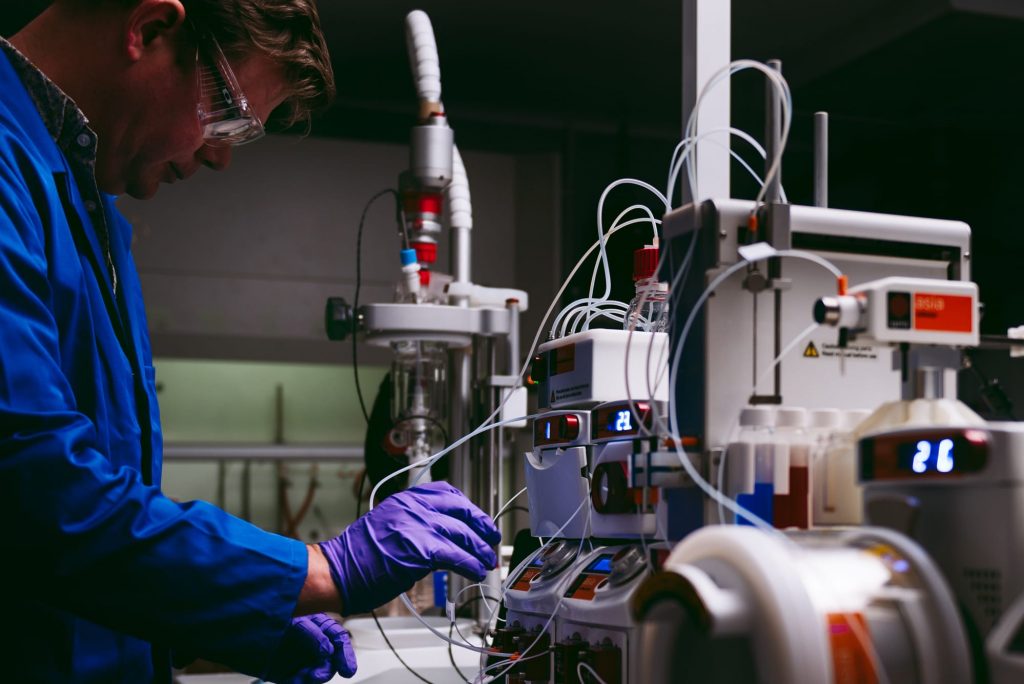Syrris Asia- reaction optimization under flow conditions video
Video Transcript
Hello, my name’s Andrew Mansfield, I’m the Product Manager for the Syrris flow chemistry product range. Today we’re going to be talking about reaction optimization under flow conditions. So, a little about Syrris. Syrris design, develop and sell automated chemistry products for R&D chemist and chemical engineers, with a strong emphasis on automation and ease-of-use. We’re based in the UK just outside of Cambridge and we have roughly 90 engineers and scientists. Our product ranges cover both batch and flow chemistry products. Today, we’re going to be emphasizing the Asia flow chemistry product range. Asia is not just one system, it’s a family of systems. As you can see, it’s completely modular and this allows us to build up systems from a basic entry-level system for beginners to more complex multi-functional systems for more advanced users. So if we consider the basic requirements for flow chemistry, we need some pumps to introduce our reagents, we need a reactor to facilitate our chemical reaction, we need a pressure controller to be able to get to our desired chemical reaction conditions. So if you consider this basic setup; by changing flow rates and changing temperature we can change a range of continuous parameters, be that residence time, temperature or the stoichiometry, the molar ratio of our reagents we want to look at. If we consider a more advanced practical requirement, you can see we can add extra pumps, we can add extra reactors, we can add methods for inline workup and continuous online analysis. With the ability to optimize each of these steps and combine them together, we can optimize quite complex flow chemistry processes. So, why is reaction optimization under flow conditions of benefit? Well, we can easily introduce a whole range of reactants, reactors are self-cleaning – as one reaction passes through, the solvent cleans the reactor, so we can run multiple reaction conditions with the same setup. We can rapidly change our reaction conditions – be that reagents, temperature, residence time or a molar ratio. We can access very small sample volumes, so we can optimize our reactions with very small masking material. Via automation, we can set up completely walk away processes for reaction optimization. For in line analysis, we can analyze each of our chemical reactions as they exit the reactor and we can set up multi-step reaction capabilities. So if we consider the methods of introducing samples into our flowing stream, on the Asia range we have two methods for doing that, we have the Asia Reagent Injector, with this system, via sample injection loops, we are able to introduce two independent chemical streams, so two independent reactants. With a setup, we’re able to and to look at continuous variables, such as molar ratio, residence time and temperature. If we want to look at introducing a range of reactants such as reagents, catalysts or look at different concentrations, we can use the automated reagent injector, which works on a very similar principle to the reagent injector. You can see here we have two coaxial needles, a range of a range of vial sizes and racks that allows us to access these continuous variables so we can automate rate and reaction optimization, but we need a method of collecting our products. So the simplest way on the Asia range is to use the Product Collector. Now this system allows us to divert our waste stream to our collection stream under automation conditions, we’re able to manually collect each of our reactions. If we want to run multiple reactions under automated conditions, then we can use a device such as an automated collector like this fraction collector we have here. Then we are only limited to the number of reactions that we can run by the number of vial positions we have. Using our automated control software, Asia Manager, we’re able to introduce multiple reaction conditions, we can investigate multiple reaction conditions, allows us to introduce multiple reactants and assignees in a chemical process and it’s an easy to use, fully automated reaction optimization platform. So, I have one example here of some chemistry that’s been carried out, this is the optimization of the thiazole synthesis carried out the Berne Institute in California. You can see from this example that we’re able to vary residence time, temperature and water equivalents. In under 40 minutes we are able to run 9 discrete reaction conditions and able to optimize our method development in a rapid quick process. If you want to find out any more about reaction optimization or the Asia range, please visit us at www.syrris.com

Asia flow chemistry
Asia is a range of advanced flow chemistry products designed by chemists for chemists to enable the widest range of chemical reactions and ultimate ease of use. The modular nature of Asia systems allows you to be flexible with your applications and adapt your configuration to suit your needs.